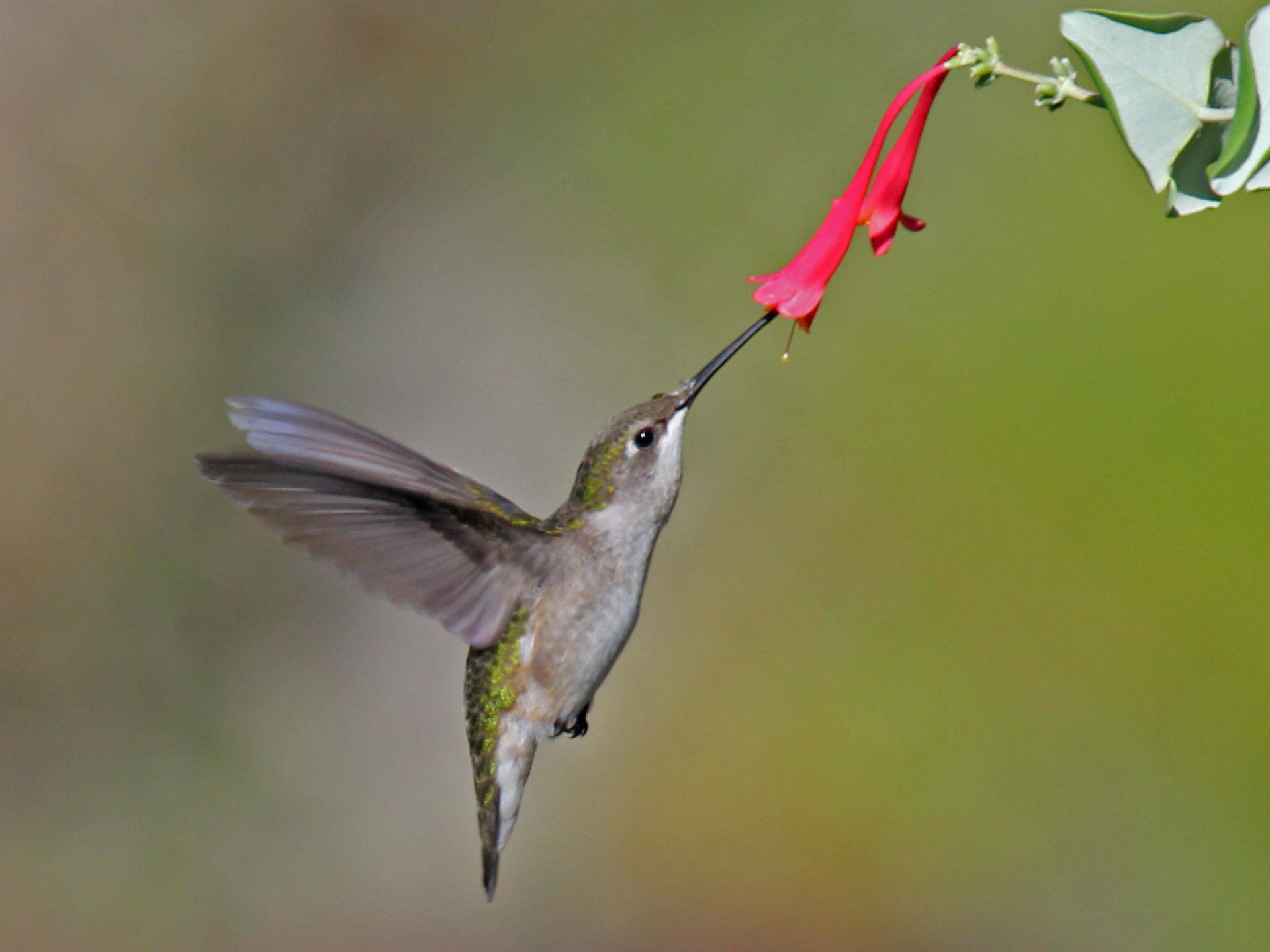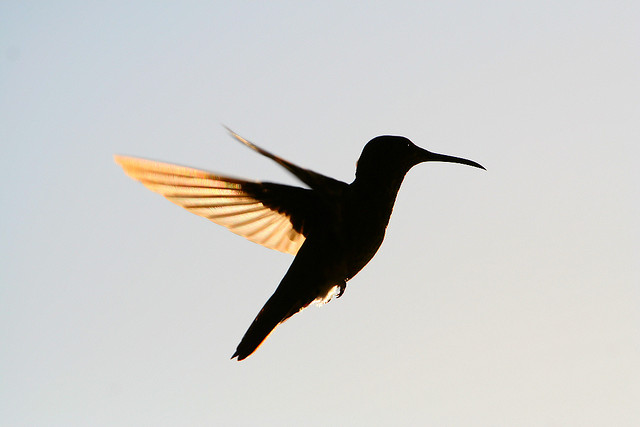On Not Waiting to be the Hummingbird:
The Life and Death
of Lee Hawkins
First Parish Church of Groton
May 24, 2015
[For audio version, click here.]
Two decades ago, I had the chance to speak with the coordinator of my grandmother’s hospice care, who happened to be an acquaintance of mine. I asked how she was doing – not medically, but spiritually. My friend said simply, respecting both my grandmother’s confidentiality and my grief-as-curiosity, “As we live, so we die.” This was unfortunate for my grandmother, who barely topped five feet but intimidated the beejeezus out of nearly anyone, including her progeny, with her need for control and insistence on her rightness in the world. Dying was no easy path for her.

Today I want to tell you about a different older woman whom I loved. I want to tell you about a different way to encounter dying and death. I want to tell you about someone who, when the time was right, couldn’t wait to be the hummingbird. I want to tell you about Eleanor “Lee” Hawkins. There are many reasons I am telling you about Lee. In December, I go before the Ministerial Fellowship Committee. Scuttlebutt says one commonly posed questions is, “Please name one Unitarian or Universalist or Unitarian Universalist hero from each of the last four centuries.” If I get that question, I plan on naming Lee as my 21st century choice. I am telling you about Lee as a talisman for myself, a gesture as part of my own spiritual practice of befriending death, my inelegant attempts to live into that line from our reading: “the tenderness yet to come.” That poem is our reading today because Lee left instructions for me to read it at her memorial service last September. Lee was, indeed, that hummingbird. Back in 2004, when her husband was dying at home, he called out to Lee from the bedroom. It was time. He told her that he was at death’s door. Lee went to him full of devoted love – they had been married for decades upon decades and were still effervescent with their adoration for each other. She sat on the bed, and asked, “Rog – what’s it like?” I am telling you about Lee because I want her witness in the world to expand your notions of what is to be human in this aching world that always, without exception, ends in death. Rev. Forrest Church invited his congregation – Unitarian Church of All Souls in New York City – to witness his journey of terminal illness and facing his own death. He wrote about it in one of his many books, though this theme of death was a frequent one for him. Here are some of his wise words:
Death is not a curse to be outwitted no matter the cost. Death is the natural pivot on which life turns, without which life as we know it could not be. A pro-life-support position is not always a pro-life position. When we can no longer hold on with purpose, to let go is to die with dignity and grace.” (Cathedral of the World: A Universalist Theology)
At one point, he was interviewed by NPR’s Terry Gross. She asked him about his initial (relatively positive) reaction to news of his terminal diagnosis and how he was in a “pink cloud” for several days. She wondered if it was denial, or if it was his “theology” at work. In response, Church said,
“Every minister spends a lifetime preparing for this exam. The most important work we do is done with families in bereavement. But we really don’t know, having given all of this advice and held all of these hands and walked all of this journeys through the valley, how we ourselves are going to respond. And it was a great relief to me that I was able to embrace my death. I sensed that, if you’ve made peace with your life, you can make peace with your death. But if you haven’t, it’s much more difficult.”
Minister or lay person, churched or so-called “unchurched,” organized or free-range, death is the great leveler, and there is much for us to learn and gain and be enriched by these stories and acts of witness. Born in California, Lee lived much of her life in Staten Island, teaching public school, active in the UU congregation there. Then, for the last twenty or so years, she was in Northampton, Massachusetts, where she and I were members of the same UU congregation. As I understand it, for most of her adult life, Lee spoke of her intention to be aware and in control at the end of her life. Yes, documents: a well, advanced directive. But conversations, too, with her family: extraordinary medical interventions, her vision of what a good life is and also what a good death might be. This intention was part and particle of her deeply rational, deeply kind, deeply political being. As she gained years, having not succumbed to the vagaries, surprises, and tragedies so many of us humans experience, she prepared for the possibility of dying of old age on her terms. This impulse was not born of that depression that can accompany the aging process, which is often so much about losing – losing capacities, losing friends, losing out on experiences in the wider world – though anticipating this, and eventually experiencing it, did inform some of the timing and texture Lee’s choices. Lee was public about her plans. When the time came – and she did not know exactly what time that was, but when it did – she would “manage her own death.” That’s the phrase she chose to describe her actions. “Manage her own death:” some amount of control, but also facing towards it, not away. She researched her options methodically and with attention to how her choice might impact her family and community. She made her decisions in relationship with her adult children – not seeking their approval, but informing them, bringing them along, gaining their assent. In the end, at the age of 90, still without terminal diagnosis, living in a body weakening and a mind beginning to forget, she made it clear that, when the time came, she would stop eating and drinking. In late June, I heard from a mutual friend: it was nearly “time.” Like so many of her friends did at this time, one evening I brought dinner over to Lee. She had not much hunger for food, but certainly for company. Each of us knew we were having what would be our last conversation. Lee took such delight in the gift of knowingly having a last conversation – she said it was one of the best parts of being public about deciding to manage her death. Talking about death and being near death has never been hard for me, but last summer I was completing my internship as a hospital chaplain, so I was getting even more practice. While “eating” with Lee, I asked her if she would meet with my CPE (Clinical Pastoral Education) peers and supervisor. Never having lost the drive to teach, I knew Lee would welcome this opportunity. Seven of us spent a few hours with her, listening to and learning from a person choosing to encounter death with such intention. One of my favorite moments from that meeting is Lee chiding the quiet ones who didn’t ask questions – “how could they pass up this opportunity?” she queried, impatient at their timidity. Ever committed to teaching and to public witness of encountering death without fear (or, from her humanist side, superstition), she had taken part in a community dialogue about death the year before she died. She had been interviewed by the local newspaper about her plans, engaging in an intimate and frank dialogue that was published in 2013. By late August, Lee had intentionally stopped eating and drinking. Surrounded by her three adult children, moving towards death, Lee invited (and her children had allowed), that same local newspaper reporter and photographer to be present, to record in word and photo, the process of her dying and her death, which took place on September 2 last year. The narrative and photo-narrative was published to much praise and much condemnation. Death can be a hard thing and we have, for the most part, hidden it away. So when a person like Lee, or a journalist, or a newspaper, decides to stop hiding, strong feelings erupt. Not many of us are ready for death. I am not ready for death. But it does not much matter, our readiness, our assent. Death comes. Wise people tell us that if we live our lives knowing that we are going to die – that we are in many ways, always dying, each moment – that our lived days will be fuller and more precious. A hard lesson to take in, but our ministries, and our very lives, depend upon it. Let me close with another UU voice who has blessed us with reflections upon her own death. The Rev. Nancy Shaffer was diagnosed with a brain tumor which eventually, and far too soon, took her life on June 5, 2012. Nancy kept a journal with the intention of having her reflections published, which they were, under the title, While Still There Is Light:
This is not lost on me: Given that I have a tumor That – I am told – will someday kill me I have also the advantage That I must reflect now – While I am alive – On the meaning of my life And how I want to leave it. I might have died quickly. This is harder, perhaps, But exquisitely richer: I get to grieve for my own self. How tender and not-to-be-missed Is this?

May each of us be more able to face death: that of loved ones — even our own — to know peace and ease, and perhaps even the curiosity of Mary Oliver’s hummingbird. Amen. Blessed be. May it be so.